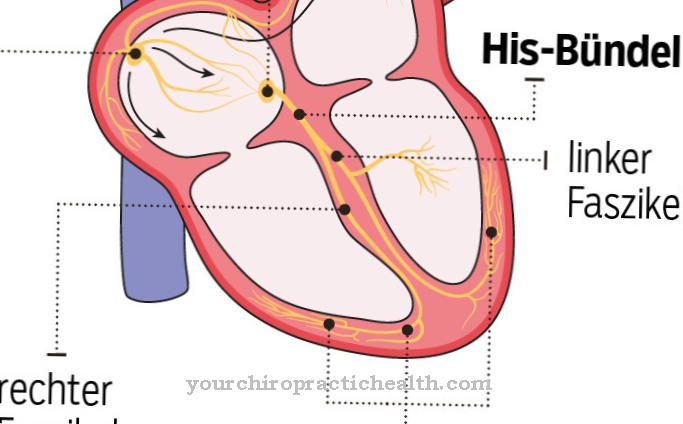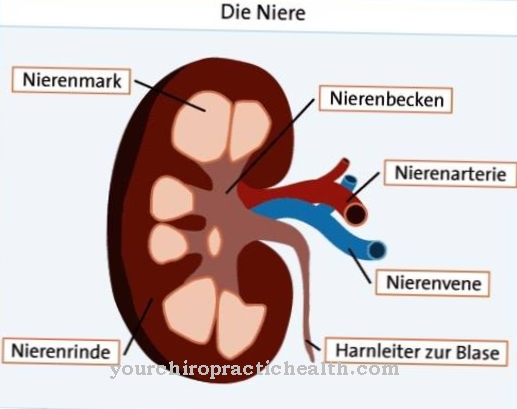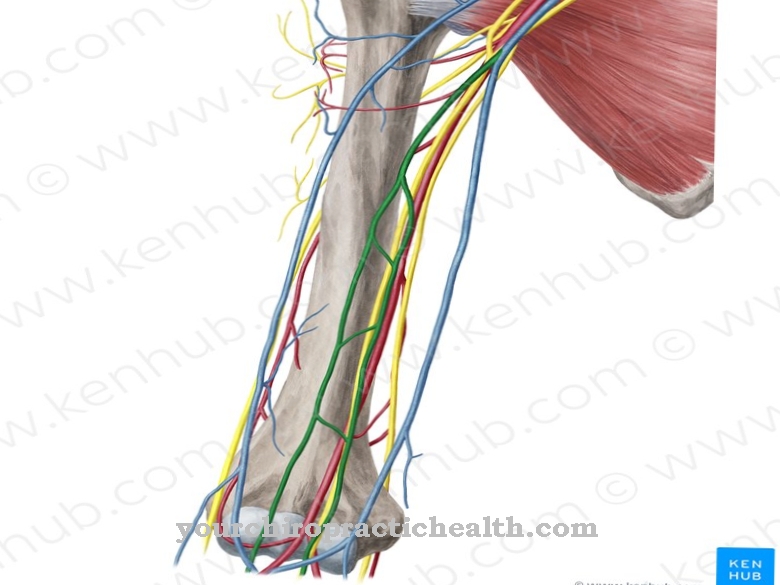As Mitochondrion is a term used to describe a cell organelle that, in addition to other functions, is primarily involved in the energy supply of the cell via the adenosine triphosphate metabolism. Mitochondria have their own genetic material in the form of mitochondrial DNA. Depending on the energy requirements of the cell types, a few to several thousand mitochondria can be present in a cell.
What is the mitochondrion?
A mitochondrion is a cell organelle that is found in practically all human cells in e.g. T. large numbers of up to several thousand are present. An exception is the top layer of skin, the stratum corneum, which consists of dead corneal cells and does not contain any mitochondrons.
Mitochondria are equipped with their own genome, the mitochondrial DNA (mtDNA), which supports the assumption that the mitochondria were originally independent organisms that have entered into an endosymbiosis with the cells of multicellular organisms. Mitochondria are no longer able to live independently in their present form. Mitochondria are characterized by their double membrane, an outer, almost smooth membrane and an inner, strongly folded membrane, which offers a correspondingly large surface for biochemical metabolic processes.
Among other things, the mitochondria are involved in the metabolism of the so-called respiratory chain and the citric acid cycle. In the respiratory chain, which runs in the intermembrane space between the outer and inner membrane, glucose is metabolized to synthesize ATP and made available to the cell as an energy carrier. In the citric acid cycle, the metabolic processes that cause the breakdown of carbohydrates, proteins and fats are brought together.
Anatomy & structure
Two membranes are characteristic of the morphology of the mitochondria, the outer membrane, which gives the organelle its almost bean-shaped shape, and the inner membrane, which is strongly folded and therefore has a large surface. Both membranes are made up of phospholipid bilayers and proteins. However, the properties of the outer membrane differ significantly from the inner membrane.
The outer membrane contains protein complexes with channels that allow a selective exchange of substances between the mitochondrion and the cytosol of the cell. The inner membrane of the sacculus-type mitochondria contains protein complexes that are necessary for the "operation" of the respiratory chain. The spaces that are created by the folds of the inner membrane towards the outer membrane are known as cristae and accelerate the metabolism of the respiratory chain.
The cristae are covered with tiny bodies with a diameter of 8.5 nm, which are known as F1 particles or ATP synthase particles and play a role in ATP synthesis. Another type of mitochondria is called the tubule type, which is found in cells that synthesize steroid hormones. The numerous tubules serve the selective transport of substances.
Function & tasks
One of the most important functions and tasks of the mitochondria is the synthesis of adenosine triphosphate (ATP) and the release of the ATP into the cellular matrix, the interior of the cell outside the mitochondria. In a complex chain of reactions, the energy obtained via catalytically controlled oxidation processes is stored briefly in the form of ATP and made available to the cells. The respiratory chain draws on metabolic products of the so-called citric acid cycle - also named Krebs cycle after the discoverer Hans A. Krebs.
The metabolism of the Krebs cycle takes place in the matrix of the mitochondria, i.e. within the space that is closed off by the inner membrane. The mitochondria are also involved in a part of the urea cycle that takes place partly within the mitochondrial matrix and partly in the cytosol of the cell. The urea cycle is used to remove nitrogen-containing degradation products such. B. to convert protein-containing food to urea and excrete it through the kidneys. Mitochondria are also involved in the process of controlled cell death, or apoptosis.
It is a kind of self-destruction of the cell with orderly disposal of the breakdown products. Apoptosis can e.g. B. be "commanded" by the immune system when serious defects or infections are detected in order to prevent damage and dangerous situations for the entire organism. Mitochondria have the ability to take up calcium ions and make them available to the cell when required. They support the important function of calcium homeostasis in the cell.
Another important function of the mitochondria is the synthesis of iron-sulfur clusters, which are necessary for numerous enzymes for the catalytic control of the respiratory chain. The synthesis of the iron-sulfur clusters is not redundant, so that it is an essential supply for all cells, which can only be provided by the mitochondria.
Diseases
Mitochondriopathies, malfunctions or disorders of the mitochondrial metabolic processes primarily have a weakening effect on the performance of the body due to the reduced synthesis of ATP.
Basically, mitochondrial disease can be due to inherited genetic defects or it was acquired in the course of life. Acquired mitochondrial diseases are primarily associated with neurodegenerative diseases such as Alzheimer's disease, Parkinson's disease and ALS, but also with diabetes mellitus, obesity, cardiovascular diseases and certain types of cancer.
Inherited mitochondrial diseases show a wide variety of manifestations, depending on where in the metabolic cascade the genetic defect affects. If, due to genetic defects within the respiratory chain or the citric acid cycle, certain enzymes are not available that are only required for certain body tissues, symptoms only occur in the corresponding organs.
Due to the variety of symptoms that a mitochondrial gene defect can cause, diagnosis is not easy. Since the citric acid cycle is usually also affected, the pyrovate “builds up”, which the body tries to break down via the alternative route to lactate, so that a greatly increased lactic acid concentration, a lactic acidosis, occurs.













.jpg)

.jpg)
.jpg)











.jpg)